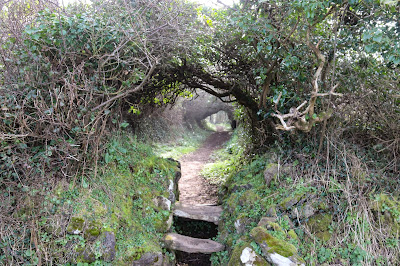| We finished coming back into the very large and densely packed graveyard at St Akeveranus. From a leaflet: "Sometime between 500 and 600 A.D., a man came to St. Keverne, who eventually gave his name to the place. KIERAN or KEV RAN came from Cape Clear in the district of Kerry, Ireland, and was probably the first Christian to live in this parish.On the site of our Parish Church, he built himself a hut to live in and another close by to serve as a Church, at the entrance of which he would have placed a wooden Cross. It is not known whether he died here, but if he did, he would have been buried near his two huts, later when other Christians died, they would have been buried near him. Thus the Church and Churchyard had begun in St.Keverne". |















No comments:
Post a Comment